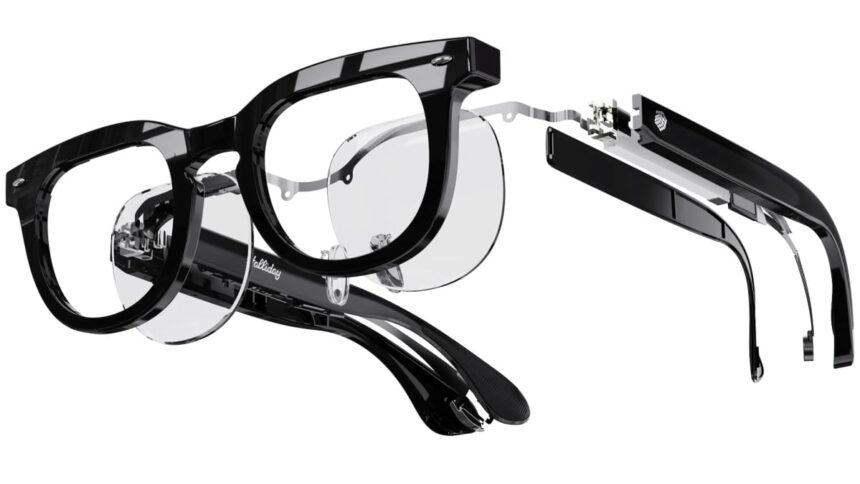The Rise of Smart Glasses: Introducing Halliday Glasses
Smart glasses are gaining traction as advancements make them more functional and aesthetically pleasing. The latest innovation in this domain is the Halliday Glasses, unveiled at CES 2025. This inventive line is inspired by Halliday, the character from the renowned novel Ready Player One.
Weighing a mere 35 grams (1.2 ounces), these lightweight glasses are packed with features. One notable element is the integrated monochrome green display, which projects relevant content directly onto the wearer’s eye. This functionality can deliver notifications such as incoming messages or responses to online inquiries.
Another interesting accessory for the Halliday Glasses is an optional smart ring that allows users to operate the eyewear through gestures, resembling a compact trackpad. However, users also have the option to tap on the frames or issue voice commands to navigate the interface.
Artificial intelligence plays a significant role in enhancing the user experience, partly driven by Proactiva.AI. Although detailed information about the AI’s workings is scarce, it connects to smartphones to deliver functionalities such as real-time translations, document summaries, and management of notifications. Additionally, it answers a variety of queries—ranging from the trivial to the complex.
The promotional information indicates that the glasses also provide step-by-step navigation directly within the wearer’s line of sight, but further details on this feature remain vague. Users can also enjoy music playback, with a battery life estimated to reach around 12 hours.
“AI glasses should not make you appear odd or be a source of frustration due to display glitches,” states Halliday, addressing a primary aim of contemporary tech design—helping users feel comfortable and normal. “Halliday embraces a stylish everyday design, utilizing the world’s smallest optical module to eradicate light leaks and rainbow artifacts while incorporating practical features for daily activities.”
When comparing these glasses to the Ray-Ban Meta Glasses, which were reviewed last year and received favorable impressions, it’s evident that both prioritize a traditional eyewear appearance. This is crucial for encouraging broader adoption among consumers.
While Ray-Ban’s offerings lack a dedicated display, they feature integrated speakers that convey information audibly and also support voice and gesture controls—along with built-in AI capable of providing real-time information such as sports scores and restaurant addresses.

Credit: Halliday
While Meta’s smart glasses have a built-in camera for capturing photos and videos, the Halliday model does not offer this feature. The Ray-Ban Meta glasses weigh a bit more, coming in at 49 grams (1.7 ounces), providing about four hours of battery life and a starting price of $329 for the basic model. Both glasses support prescription lens options.
Halliday plans to market their glasses via a crowdfunding endeavor, with a Kickstarter campaign launching soon. At present, an early bird option is available on the Halliday website for a deposit of $10, allowing backers to acquire the glasses for $370, inclusive of a complimentary prescription lens upgrade. Following the crowdfunding phase, retail pricing is expected to reach $490.
More smart glasses are anticipated to emerge later this year. As demonstrated by the Halliday and Ray-Ban Meta models, compromises remain essential—where incorporating enhancements like cameras may add weight and diminish battery life. The success of Halliday’s release may hinge on the effectiveness of its integrated display and the practicality of its AI features.












